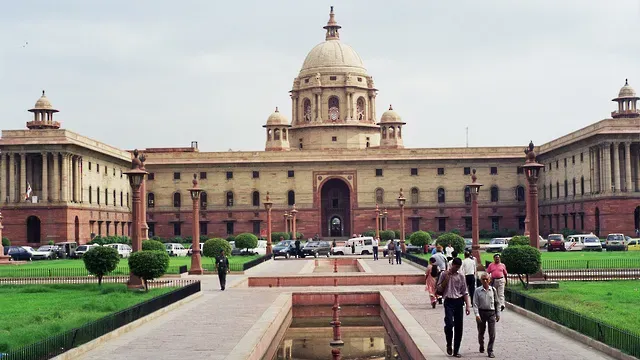Not the first cyclone, not the last: climate proofing India for the long run

Welcome to Lights On, a newsletter that brings you the key stories and exclusive intel on energy and climate change in South Asia.
In case you missed it, check my weekend interview on what India's energy sector can learn from this year's pandemic.
If you are not a subscriber, you can sign up below, for free, or you can support my work by purchasing a membership:
India has learned to deal with extreme weather the hard way. In 1999, a cyclone in the eastern state of Odisha killed nearly 10,000 people. Today, for most tropical storms hitting India's coasts fatalities remain in the double digits.
Better weather forecasts mean that a cyclone can be spotted days in advance, helping cities prepare for the impact and evacuate the areas most at risk. This was the case for Cyclone Tauktae, which made landfall in the state of Gujarat this week at a speed of 100 km/h, the most powerful storm to hit India's west coast in two decades. While the death toll stands at 61 at the time of writing this entry, with 51 still missing, it would have been of a different order of magnitude without the complex monitoring apparatus which tracks weather changes with increasing precision using satellites, doppler radars and more. But what has worked for the past two decades may not cut it when climate change alters not just the frequency and intensity of extreme events, but also the chain of impacts they trigger on the ground.
1/ It's likely that #TauktaeCyclone is the first Extremely Severe Cyclone (220 km/hr) to reach close to Mumbai in the last 130 years*. It impacted all 5 states on the west coast. Doesn't stop there—look at the thick clouds curving all around north India and neighboring countries. pic.twitter.com/UMlWAsBAWzMay 18, 2021
The new abnormal
"The disasters, the climate extremes we are witnessing are not static anymore, they have become very dynamic," says Abinash Mohanty, a risk and adaptation researcher with the Delhi think tank Council on Energy, Environment and Water. "Cyclones are happening at a faster rate, same for droughts and floods. But what is worsening both drought and flood is that they're simultaneously happening within the same district," he explains, "and many districts that were traditionally flood prone are now becoming drought prone."
Between 1951 and 2015, the surface temperature of the Indian Ocean has risen by an average 1C. Now tropical cyclones feed on warm waters, which push warm, moist air up, leading to the formation of tropical storms. As the Indian Ocean gets warmer, storms become more violent and hugely intensify in a matter of hours. This is what meteorologists call 'rapid intensification', situations in which it becomes difficult to issue detailed forecasts on the storm's behaviour.
When a storm skirts by the coast, it usually weakens and eventually breaks apart when the water becomes cool and shallow. But with sea levels rising, there's more warm water by the coast, which means cyclones linger and dump much heavier rain than before.
This is not just the case in the Arabian sea, which touches the western coast of India and used to be cool, but also for the east coast and the Bay of Bengal, a traditionally cyclone prone area where new storms are already expected next week.
Low is expected to develop in the Bay of Bengal over the next several days with conditions conducive for a cyclone to form in the basin early next week. The area most likely for impacts looks to be from #Odisha to #Bangladesh to NW #Myanmar later next week. #India pic.twitter.com/ZoIAUlOH0fMay 19, 2021
Preparing for the long term
This situation may have puzzled the disaster response community for the past few years, but as 2021 is already showing, wicked storms and their unexpected collateral damage will keep coming. Scientists say that it's now time to prepare for the long term.
"We don't have to wait for weather forecasts," says Roxy Mathew Koll, scientist at the Indian Institute of Tropical Meteorology and a lead author for the latest IPCC report on the state of the oceans and cryosphere. "Every year, we need to be prepared for this kind of cyclone because the Arabian sea is becoming much more fertile," which means more cyclones are likely to hit the coast. "We should work on infrastructure that is resilient to these kinds of very strong events," he says.
Currently, risks are identified and tackled in a siloed manner, Mohanty says. For example, "if the cyclone is going to bring in heavy rainfall, then will it bring flood or not? If yes, then to what extent and what kind of flood? What are the low lying areas which need revamping of their infrastructure?" And while casualties are decreasing, climate driven disasters seem to be bringing more damage to homes and essential infrastructure, he adds. Standards for construction and energy systems need to be updated, which means that various government departments need to talk to each other - something that in India is not happening.
"Now imagine in Goa [which was touched by Tauktae, leading to long blackouts], in the midst of the Covid crisis, you have 20 hours of hospitals running without electricity, that's a tough game," Mohanty says.
"Hospitals and slums in the heavy rain zones have to be prepped for making sure that patients are not left stranded without hospital beds, electricity or oxygen," says Raghu Murtugudde, an India-based climate scientist with the University of Maryland in the US. "Waterborne diseases tend to explode in the aftermath of heavy rains which may make people more vulnerable to Covid, for example."
The role of open weather data
Both climate-related disasters and the pandemic are putting the need for better, more granular preparedness into sharper focus. India faced the same challenges last year and not much seems to have changed.
However, "there is one resource which has improved since last year," says Rafiuddin Mohammad, a researcher at the Jawaharlal Nehru Centre for Advanced Scientific Research in Bangalore. "It's the availability of satellite data and derived products on the Open Data Registry of Amazon Web Services." Now, he says, anyone with a laptop and the right technical knowledge can create non-commercial products to show information like precipitation intensity, accumulated precipitation and location of storms in near real-time.
"Earlier, even the technical folks had difficulty getting access to and working with such data. Now a good amount of information is in the cloud," he explains. These new open source systems could provide hyperlocal information complementing the broader warning systems of the India Meteorological Department (IMD), helping people take quick decisions about how to move in their immediate surroundings.
This comes with caveats - spreading unofficial information could lead to the proliferation of fake news online, and rural areas, currently the most underserved, would still be cut off from such services.
"Creating hyperlocal weather information at a localised level is a tough task for India," Mohanty says. "But yes, the concept of community-based public warning systems is definitely a go ahead, because that leads to the final nodal agency, and you need to have that localised data, that can be fit into your larger weather stations at the district level." And then from the district level, he explains, "the information can fit into your national weather systems. So that helps a lot."
That’s all for today! If you like what you read, please consider signing up for free or as a member:



